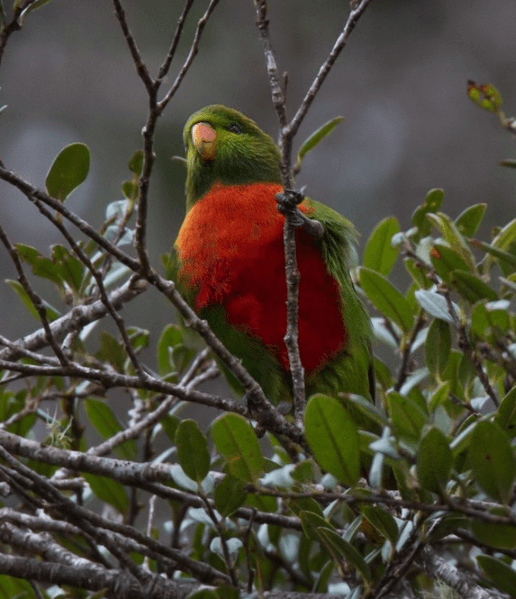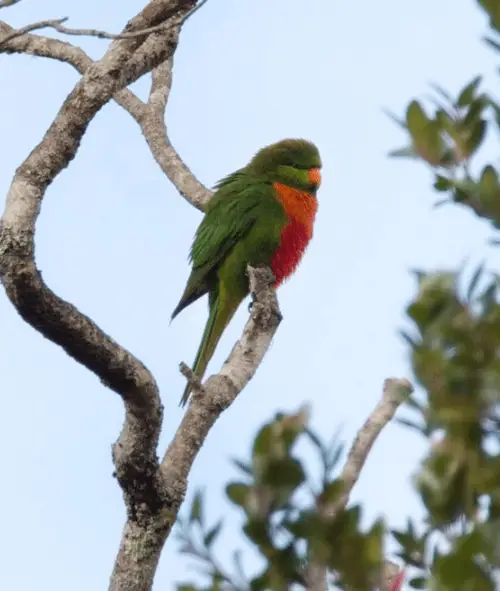
Orange-billed Lorikeet 18 cm; 25–40 g. Very similar to N. musschenbroekii but smaller, bill orange, no olive tinge and narrower yellow streaking on the crown;
red more continuous on underparts. Immature duller, with the reduced red, brownish bill. Race social like nominate but darker; alpinus has orange breast.
Systematics History
Editor’s Note: This article requires further editing work to merge existing content into the appropriate Subspecies sections. Please bear with us while this update takes place.
Three subspecies were recognized.
Subspecies
Neopsittacus pullicauda alpinus Scientific name definitions
Distribution
Distribution
Neopsittacus pullicauda pullicauda Scientific name definitions
Distribution
Habitat
Canopy of mossy cloud forest and adjacent cleared areas on high mountains up to 3800 m, descending, albeit rarely, as low as 1600 m.
Movement
No information, but a record from as low as 800 m indicates occasional vagrancy from high elevations, and regular or irregular vertical movements may be usual.
Diet and Foraging
Somewhat more nectarivorous than congener (although both may consume flowers more than sympatric Oreopsittacus arfaki and Charmosyna papou), but also take seed cones of gymnosperm Papuacedrus papuanus, and fleshy berries of Sericolea pullei.
Sounds and Vocal Behavior
Quite vocal, and Orange-billed Lorikeet calls similar to N. musschenbroekii. These include a high-pitched up slurred “tseet!” and more complex and longer shrill vocalizations covering a wider frequency range.
Breeding
Oct. Orange-billed Lorikeet Nest is reportedly in a hole in a tall tree, with 2 eggs.

Conservation Status
Not globally threatened. CITES II. Generally common and little affected by habitat loss or trade.



















